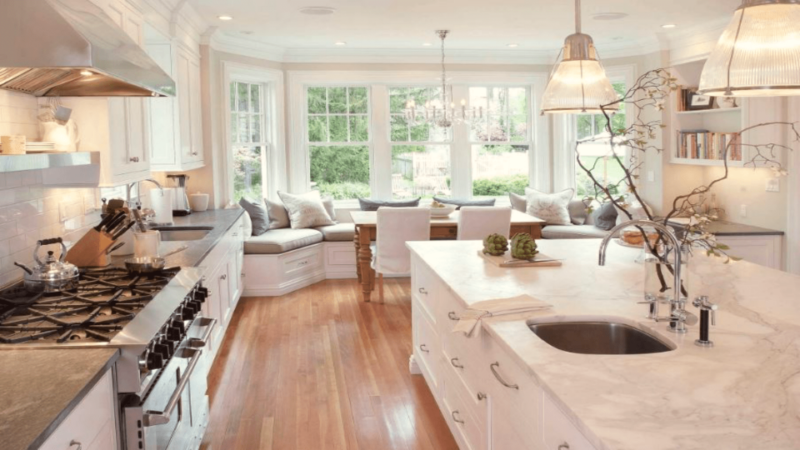
Are you thinking of changing your carpentry and you still don’t know what to choose? Indeed, the carpentry solutions on the market are innumerable and you have to analyze in detail the advantages and disadvantages of each type of carpentry. In the following, we will help you identify which type of carpentry suits you taking into account several factors, such as the quality of the chosen profile, thermal efficiency, or design.
The high energy efficiency of PVC joinery
When looking for the right type of carpentry for your home, first check the thermal coefficient. This thermal coefficient (k) practically measures the degree of energy efficiency: the lower this thermal coefficient, the more it manages to retain heat, so it is more thermally efficient. It’s very simple – you don’t have to think about deepening I don’t know what mathematical formulas!
From the wide range of types of carpentry that currently exist on the market, PVC joinery has a very low thermal coefficient, which means that it is energy efficient. The energy efficiency of PVC joinery is explainable due to good thermal insulation of materials.
Soundproofing
In the case of PVC joinery, the acoustic comfort is increased, due to the perfect sealing of the gaskets, ideal for homes located in crowded urban areas, where the acoustic comfort index suffers. And who doesn’t want a quiet evening after a hectic day at the office?
Do you want additional information?
Durability over time
PVC joinery is durable over time and PVC profiles from Adam Design House, respectively Salamander profiles, have an estimated lifespan of 25 years. Salamander PVC profiles are designed to withstand interruptions caused over time but also large temperature differences.
Forget condensation
PVC joinery has the great advantage that it has a very high thermal break, preventing the appearance of condensation. The mechanism is very simple: the temperature in the air chambers of the PVC profiles is higher than the temperature outside the profile, which facilitates a better thermal insulation. PVC profiles do not condense unlike aluminum profiles, which due to large temperature differences and the fact that aluminum is a conductor of heat, condense.
Condensation of double glazing is a major problem, common in the case of improperly chosen carpentry. However, you must keep in mind that double-glazed windows are thermal insulators and not a heat source, therefore they do not control the amount of vapor in the air. Thus, in a room that is inadequately heated, double-glazed windows cannot fulfill their characteristics in optimal conditions.
Burglary protection
PVC joinery comes with high-performance anti-burglary systems. Studies have shown that in 95% of theft cases, criminals entered through the window and not through the door. Today with the new anti-burglary systems of PVC joinery you can leave the half-open window for ventilation quiet.
Easy maintenance
PVC joinery is very easy to maintain. Forget the periodic painting of traditional carpentry. With the new PVC profiles, all you have to do is wipe the double-glazed windows from time to time with a soap-based solution and make periodic adjustments to the hardware. PVC joinery retains its appearance, color, and initial characteristics for a long time.
Design in step with trends
Until recently, PVC carpentry was viewed with skepticism, especially by architects, who wanted more personality from their future constructions. But with the new PVC profile systems, such as the bluEvolution 82 systems from Salamander, the design of the windows can be done on any architectural model. The new textures of the profiles, colors but also their technical characteristics have facilitated the penetration of PVC carpentry in the graces of the architects who design houses with a special identity.
PVC joinery is more than a window or a simple door – it has its own identity in relation to the architecture of the building or the preferences of the owner.
Leave a Reply

